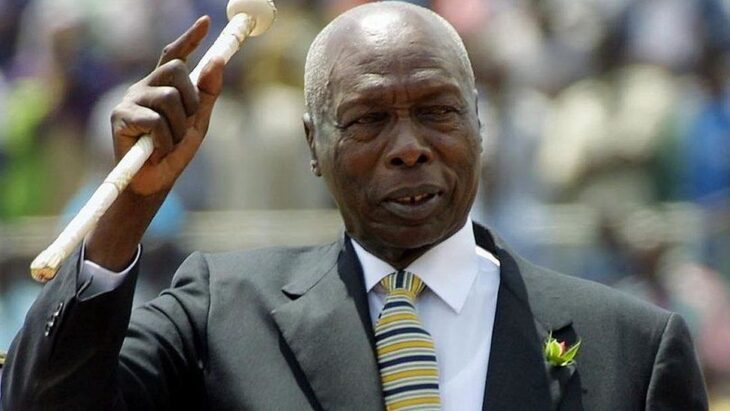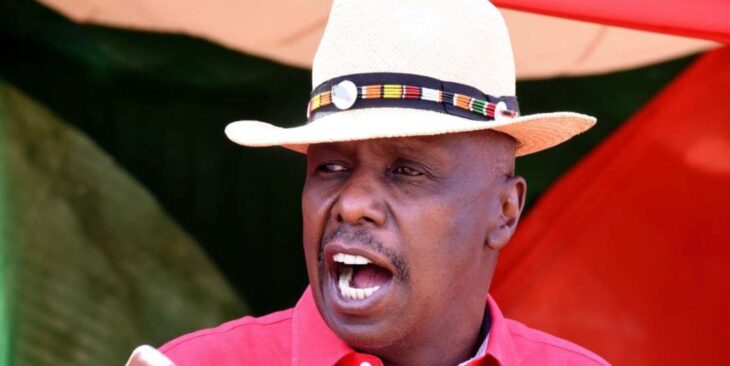When Joseph Kamotho, one of late president Daniel Moi’s trusted lieutenants in the early 1990s said Kenya would be led by the independence party, KANU, for 100 years, many laughed him off.
At that time, no one understood, and many thought Kamotho was just but a deluded sycophant of Moi, who had led the country for a record 24 years.
Today, Kenya’s politics is still being shaped by former KANU spanner boys who wield power and strong ambitions to ascend to power in 2022.

President Uhuru Kenyatta and his deputy William Ruto are proteges of late president Moi and his KANU regime.
Ruto has begun mounting a strong campaign to succeed his boss and is arguably a frontrunner in a race that will pit him against other former KANU lieutenants.
ODM leader Raila Odinga, Wiper’s Kalonzo Musyoka, Musalia Mudavadi of ANC and Moses Wetang’ula of FORD Kenya are all ex-KANU members eyeing the presidential seat in 2022.
Since Moi handed over power in 2002, all the aforementioned politicians have been at the centre of Kenya’s politics, occupying high offices and running for top seats in every electioneering period.
Both Ruto and Raila served as KANU secretary generals and were close to Moi during his final years in office.
Although Raila had some differences with the former head of state, he settled the scores and worked with him until late 2002 when he jumped ship and joined Mwai Kibaki’s NARC coalition that dethroned KANU.
Mudavadi served in Moi’s government as Finance minister and a short-term vice president before the new regime was ushered in in 2002. He was also picked as Uhuru’s running mate in the historic transition General Election that ended KANU’s 24-year rule.
Kalonzo was KANU’s long-term minister. He first joined the cabinet in 1986 as assistant minister for Works, Housing and Physical Planning.
Between 1993 and 1998, the Wiper Party leader served as Minister for Foreign Affairs before he was moved to the ministry of Education. He also served as Minister for Tourism and Information in the last 12 months of Moi’s regime.
Wetang’ula was part of Moi’s legal team together with the late Makueni Senator Mutula Kilonzo. He was nominated to parliament in 1992 and became one of Moi’s blue-eyed boys in Western Kenya politics.

The current KANU chairman, Gideon Moi, who has also announced his bid to succeed Uhuru in 2022, is the de facto heir of the late president’s political capital.
During the burial of his father in February 2020, Gideon’s elder brother, Raymond, turned down the offer to spearhead KANU politics and told the nation that Mzee had given all the political blessings to his young brother (Gideon).
Today, Gideon, Mudavadi, Kalonzo and Wetang’ula are working together under the One Kenya Alliance (OKA), a new political vehicle they have formed to advance their 2022 political interests.
Although they have not agreed on a flagbearer, a pick from any of the four principals would be definitely a continuation of KANU’s rule.
On the other hand, Ruto, who is considered to be Moi’s most astute and successful student, is assembling his political capital around the United Democratic Alliance (UDA).
The second in command joined KANU politics in the early 1990s when he was still a university student. He played a key role in the reelection of Moi in 1992 through the dubious and dreaded underhand operations of the infamous Youth For KANU (YK92) wing, which he was part of.
The group was known for dishing out handouts and firmly dealing with Moi’s critics. Ruto is said to have made some of his riches during this period.
“My first interaction with Moi was when I was a university student…A few of us (university students) went to see him at one point and we asked him to give us a piece of land in Eldoret,
“And he actually did and we sold the piece of land. With that piece of land, I bought my first car,” Ruto said during an interview with a local TV channel in February 2020.

Ruto was part of the team that stood with Uhuru as KANU’s presidential candidate in 2002 when other political bigwigs walked out.
However, they parted ways in 2007 when Uhuru, then opposition leader, joined the government and supported Kibaki’s reelection as Ruto backed Raila’s Pentagon team.
In 2013 they reunited under the Jubilee coalition and remained a pair until 2017 when things started falling apart again. Like in 2007, Uhuru decided to work with the opposition, something Ruto remains fiercely opposed to.
Currently, Raila is working closely with the president in preparation for his fifth stab at the presidency. The two worked closely in 2001 as members of KANU and in 2005 as leaders of the Orange Movement, a political formation that opposed the constitution during the referendum.
Whether Raila, Ruto or any other of the OKA principals win in 2022, it will still be the KANU regime perpetuating itself in power.
Political analyst Herman Manyora opines Kenya’s politics will revolve around the KANU students for a long time before a new crop of leaders takes over.
“All the top five presidential aspirants we have today are KANU and some of them are still young. Someone like Ruto can still vie even beyond 2032…these guys will be here for quite some time before we get fresh leaders,” said Manyora.
He attributed this to political alignments and realignments that revolve around these politicians, most of whom, he noted, have strong working relations dating back to the early 1990s and often “converge and diverge” depending on situations and interests.
Recently, Kibaki’s son, Jimmy Kibaki, disclosed that his father and President Uhuru have strong family ties that commenced way before the latter was born. He added nothing would have separated them even after facing off in the 2022 presidential race.
“My father is President Uhuru’s Godfather, the Godfather of Jomo Kenyatta’s favourite son. When he was born, my father is the one who suggested the name ‘Uhuru’ to Jomo since Kenya was on the cusp of independence,” said Jimmy during an interview with Daily Nation.
Kibaki held powerful finance positions in Jomo Kenyatta’s government before he was elevated to the docket of Minister for Finance in 1969.
When Jomo died in 1978, Kibaki became Moi’s deputy until 1989 when they disagreed and parted ways.
According to Jimmy, the former president picked Uhuru as his preferred successor and directed the military to play ball.
“He told the comptroller that Uhuru was the only person allowed to go to State House without the requirement of an appointment since he was his neighbour,” added Jimmy.
As the 2022 General Election approaches, politics of family ties and long-standing working relationships will play a key role in determining who succeeds Uhuru. At the centre of this will be KANU’s unifying political fabric.
